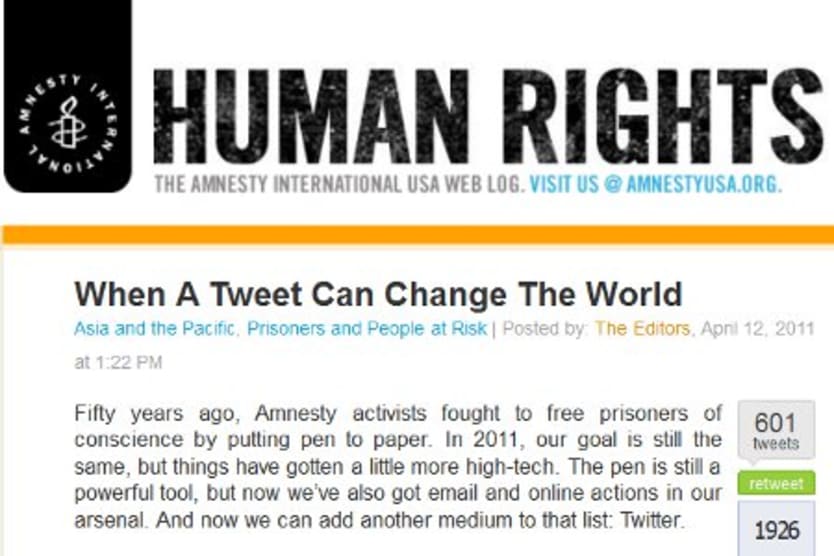
Faizan Rafiq Hakeem regained his freedom on April 5, after more than a month of incarceration. And it’s largely thanks to Twitter.
Hakeem is a 14-year-old native of Jammu and Kashmir, a state north of India. He was arrested in early February 2011 for rioting, and though he received bail, the police still detained him, citing provisions of the Jammu and Kashmir Public Safety Act, which allows detention of up to two years without charge or trial.
Amnesty International pressed for Hakeem’s release and took its campaign online. Soon after launching #freefaizan on Twitter April 1, Amnesty supporters were sending angry tweets to @abdullah_omar, the personal Twitter page of Jammu and Kashmir Chief Minister Omar Abdullah.
“@Raheelk medical tests show him 2 B above 17, Law in J&K a minor is under 16. However in light of circumstances am looking sympathetically,” Abdullah, an active Twitter user, replied to one of the tweets on April 1.
He later added: “@Raheelk it’s too border line a case to allow only a legal perspective to prevail. I’ll take a few days to consider all aspects & decide.”
And the rest, as they say, is history.
“Thanks to social media, the world we live in is getting smaller and smaller — and the more interconnected we are, the harder it will be for human rights violations to go unnoticed,” said Amnesty USA in its “Human Rights Now” blog on April 12. “Faizan’s story is proof that enough voices speaking up about injustice are too loud to be ignored, especially on a public medium such as Twitter, where both action and inaction by those responsible can easily fall under scrutiny.”
Amnesty, similar to other campaign groups, is active on major social media channels. Its USA chapter is present on Twitter and Facebook, where it has a total following of more than 600,000. It is also on YouTube and Foursquare.
Devex spoke with Kyra Stoddart, online marketing manager at Amnesty International USA, to learn about the group’s philosophy for using social media. She also cites some common mistakes committed by organizations in social media management.
In less than 140 characters, describe your social media strategy or vision.
We use social media to educate the public about our issues; engage and mobilize our current members and activists, and recruit and mobilize new members and activists.
What has your social media presence allowed you to do that you may not have been able to achieve otherwise?
It is especially good to help mobilize groups of people to take action quickly … A strong social media strategy should also not only focus on getting the message out to a mass audience, it should focus on reaching influencers, developing relationships, encouraging conversation and obtain insights.
We use social media to:
Foster awareness of human rights issues.
Recruit and mobilize activists and members.
Listen and learn.
Build relationships.
Brand building.
Driving traffic to our site.
What do development organizations, whether bilateral and multilateral, nonprofit or corporate, need to know about social media and how it can help them?
Social media is not a magic bullet but it can be a great way to enhance your campaigns and programs, to mobilize your supporters and to get feedback.
One thing I’ve seen some organizations do wrong is to not treat social media as another form of communication on equal footing with the more traditional channels. It’s important that those managing social media profiles are well versed in a company or organization’s policies – what you can and can’t say. And also have a broad understanding of the issues so they can respond to questions (and they should be responding to all questions that arise in their social channels!). Some organizations use interns to manage their profiles who may not know how to stay on message, how to deal with negative feedback, or how to move casual “followers” up the ladder of engagement to become activists and donors.


